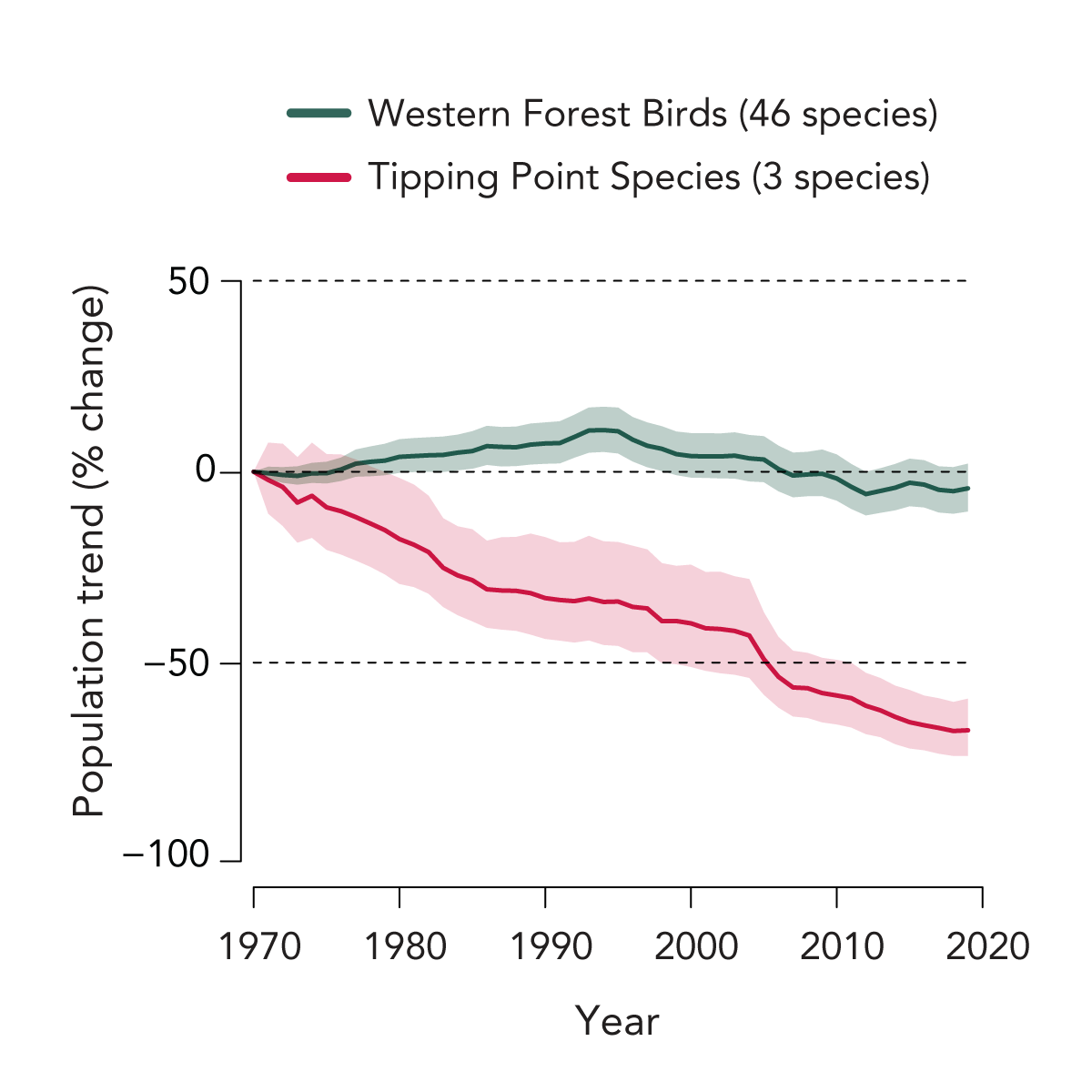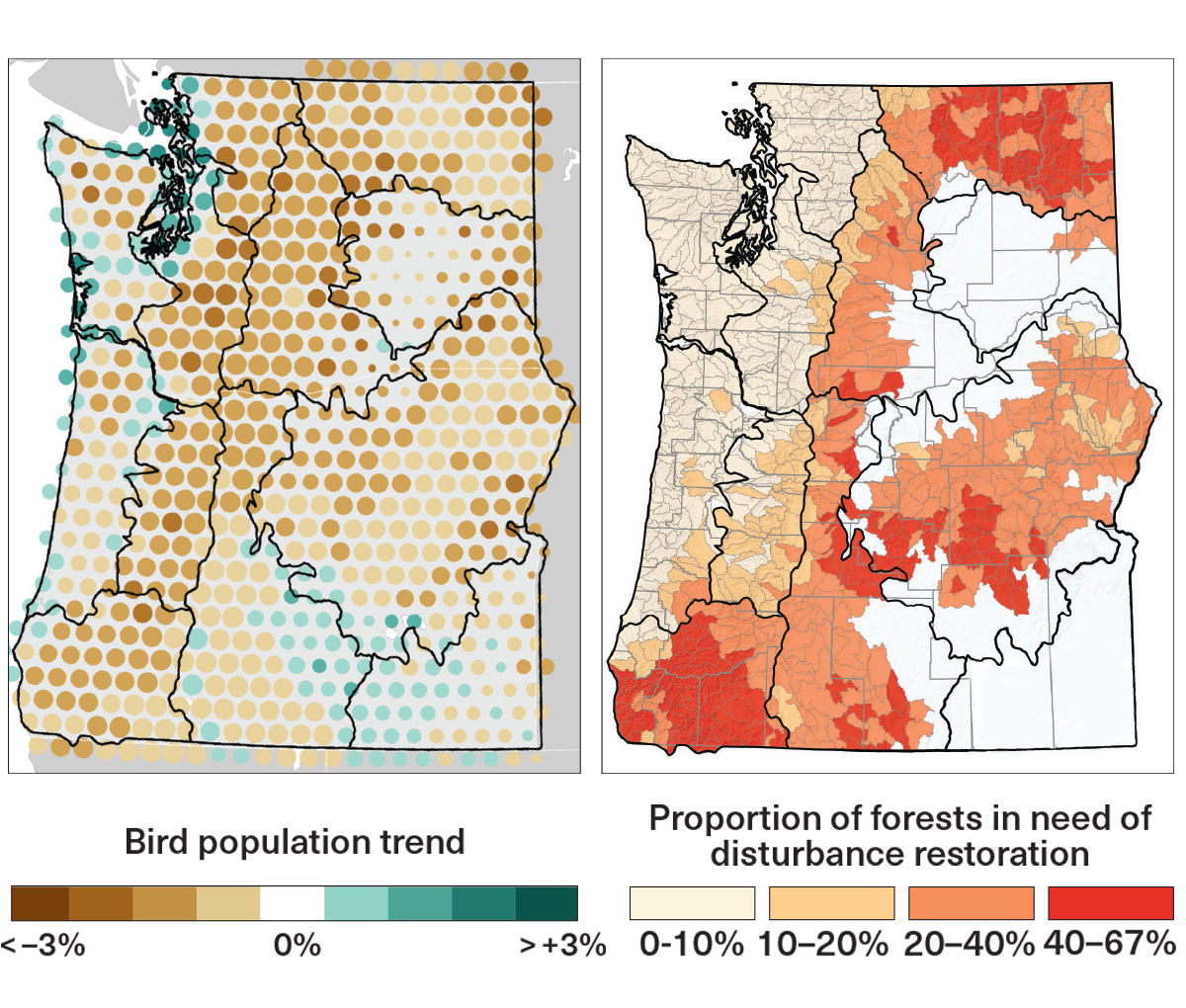Western Forest Birds
Restoring Natural Cycles for Forest Health
Status: Stable overall, but with warning signs

The overall population for the western forest birds group is much the same as it was 50 years ago, aided by protected habitats. But since reaching recent highs in the early 1990s, western forest birds have declined by nearly 20%.
- Almost half of this group (19 species) currently have declining population trends.
- Five species have lost more than half of their population since 1970, including Tipping Point species such as Pinyon Jay and Rufous Hummingbird with poorly understood life cycles. More science is needed to identify the drivers of their declines.
- Recent declining trends among Oak Titmouse, Williamson’s Sapsucker, and other birds appear to be associated with the disruption of natural disturbance patterns such as fire cycles.
Birds Are Declining Where Western Forests Are Stressed

For most of the past 100 years, western forests have been managed to encourage conifer tree dominance and discourage fires. But for many centuries before the 1900s, fires were common on this landscape, both natural wildfires and intentional burns by Indigenous peoples.
Today those historic disturbance patterns that created a mosaic of conifer and broadleaf forest cover and successional stages have been disrupted, and large swaths of western forest landscapes have departed from their natural range of tree species and structural diversity.
These areas of forest departure from natural patterns are also hotspots for western forest bird declines. Furthermore, these compromised forests have very little resilience to the forces of wildfire and climate change, which puts greater forest landscape health and forest resources (such as water reservoirs) at risk of disaster. Investments in forest restoration can turn around this dim outlook for western forests and western forest birds.
